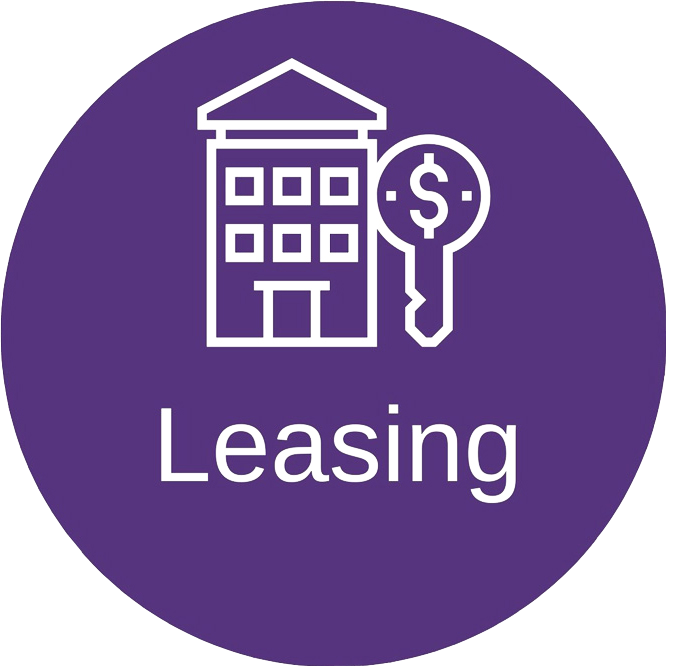A spike in interest rates has created challenges for many commercial real estate owners as their low-rate loans come due, and some landlords in Silicon Valley have a key deadline bearing down.
According to an analysis of commercial mortgage-backed securities data by The Business Journals, the San Jose metropolitan area — which covers Santa Clara and San Benito counties — has 136 loans maturing by the end of 2024. Those loans have a collective balance of $3.4 billion.
Looking deeper, 65 of those maturing CMBS loans show signs of distress and are in danger of showing up on loan servicer watchlists or in special servicing or marked as delinquent, in foreclosure, bankrupt or matured and nonperforming. The balance due on those troubling loans is more than $1.5 billion.
CMBS loans represent only a fraction of the overall commercial real estate lending market, but the analysis provides a snapshot of how prominent properties and markets are faring in a rapidly evolving sector still feeling the aftershocks from the Covid-19 pandemic.
All told, Morgan Stanley analysts found nearly $1.5 trillion in overall commercial real estate debt is maturing by the end of 2025.
Experts say the scenario creates significant refinancing risks. New loans will be much more expensive due to higher interest rates. And that’s if property owners can even refinance at all, as more banks pull back on lending or underwriting due to the financial system’s turmoil and economic uncertainty.
Meanwhile, commercial real estate sales have dipped this year as higher rates and tighter loan requirements discouraged buyers or prompted them to offer lower prices for real estate. That means it’s going to be harder for property owners with maturing loans to sell, and purchase offers could come in lower than expected.
‘It’s a tsunami coming’
Many CMBS funds are working to extend loans, but that’s a challenge in the office sector because of property appraisals’ “shocking” declines in value, said Stephen Buschbom, Trepp LLC’s director of research.
“The challenges maturing CMBS loans will face this year with higher interest rates include increased borrowing costs, potentially lower valuations and a tighter lending environment – making it more difficult for borrowers to refinance their loans,” Trepp Research Analyst Vivek Denkanikotte said. “There is a concern that higher interest rates could lead to lower debt service coverage ratios if the property’s income does not increase proportionally, potentially indicating a higher risk of default for the borrower.”
Banks hold about 51% of all commercial real estate loans nationwide, according to data from Trepp. And because they pay much higher rates to depositors now, banks are eager to rid their books of any loans paying low rates to help improve their cash flow.
“Every bank and credit union and mortgage lending company is freaking out because the debt service coverage on commercial real estate loans is out the window,” said James Angleton, CEO of Miami-based United Police Federal Credit Union. “None of them can easily underwrite cash flows on these interest rates …. It’s a tsunami coming.”
Angleton said many banks will ask borrowers to put more equity into the deal to extend a commercial real estate loan, which would reduce the amount of debt service, even at the higher interest rate. But if the borrowers refuse, this could mean trouble because other banks won’t be eager to assume those loans, he added.
Capitalizing on opportunities
While the situation presents a number of challenges, some companies are looking to pounce on the opportunities.
“General market forces are making folks more reluctant to lend, and there will be a massive supply and demand imbalance across commercial real estate,” said Mukang Cho, CEO of Morning Calm Management, which owns office buildings. “There is a huge pocket of opportunity, and we’re looking to fill that void.”
Morning Calm recently formed a $500 million joint venture partnership with an unidentified global investment manager to finance Class A office in large markets across the U.S. The idea is to capitalize on the wave of debt maturities by providing mezzanine lines or preferred equity, Cho said. Both are secondary forms of financing that are junior to the first mortgage. His joint venture could also purchase mortgages and work with the borrowers.
Office building owners are under stress due to more tenants shifting to remote work and higher operating costs, including for insurance and tenant improvement construction, Cho said. Many of them will need secondary financing to buy more time.
“I don’t know if there is any sector that can escape the broader capital market’s challenges,” Cho said.
Most troubled sectors
The office market has emerged as a particular challenge amid the turbulent market and looming maturities. Lenders have recognized that the value of office has declined in most markets nationwide, so finding a bank to refinance them will be tough, experts say.
It used to be that office buildings with a large tenant were very desirable for a lender, but now it’s a potential liability because many larger office users are downsizing with remote work, said Holly MacDonald-Korth, CFO of KDM Financial, a commercial real estate lender holding over $500 million in loans. Another difficulty is that few offices have sold this year, so it’s hard to obtain a good appraisal to base a loan on.
“Certainly, office is the hardest thing to refinance now because they have the dual problems of everyone working from home and we don’t know what those buildings are worth,” she said. “It’s going to be an interesting 12 months or so with the multi-prong problem of high interest rates, a loan maturity wall and banks pulling back.”
Property owners with floating rate loans are already feeling the pain from higher interest rates, especially if they were construction loans or construction bridge financing, which tend to carry higher rates in general, MacDonald-Korth said. Many borrowers are trying to refinance because the higher rates have made their business plans unprofitable.
Apartment developers that started construction in 2020 or 2021 likely dealt with higher-than-expected construction costs, more expensive insurance and movement in capitalization rates that reduced property values, said Ben Jacobson, a partner at Boynton Beach, Florida-based Forman Capital, which arranges multifamily loans. Rent growth has softened this year, so operating income may not be enough to make up the difference.
“Everyone thinks the big challenge is office, but there will be pockets of challenged loans for multifamily, especially on the construction side,” Jacobson said.
Bankruptcy attorney Joe Pack, of Pack Law, said he’s heard from many developers running into problems with construction loans.
“The bottom is starting to fall out in the lower-tier markets,” Pack said.
Lenders demand more equity
If property owners hope to refinance, they will likely need to cut a check and bring more equity to the table.
Many commercial real estate borrowers up for refinancing are faced with a rate 3 or 5 percentage points higher than their current rate, so they don’t have the debt service coverage to comfortably make those payments, KDM Financial’s MacDonald-Korth said. The solution is the borrower contributing more equity into the property.
“If you want a $10 million loan, I can only really give you $8.5 million now,” she said.
Many investors are lining up with “rescue capital” to help commercial property owners refinance with lower loan balances, said Eric Hochman, chief investment officer of office and retail property owner Pebb Enterprises. As lenders demand more equity, borrowers can tap mezzanine financing or preferred equity deals to obtain those funds at refinancing, he said.
Paying higher interest rates at refinancing will be challenging for many property owners, said Charles Foschini, a senior managing director of commercial loan broker Berkadia. It’s harder to obtain loans now because of the market volatility amid the rate hikes, but credit is still available.
“The cost of capital is going to be higher, and that will take a bite out of cash flow,” he said. “That doesn’t mean properties won’t be profitable; they will just be less profitable than if rates were lower.”




